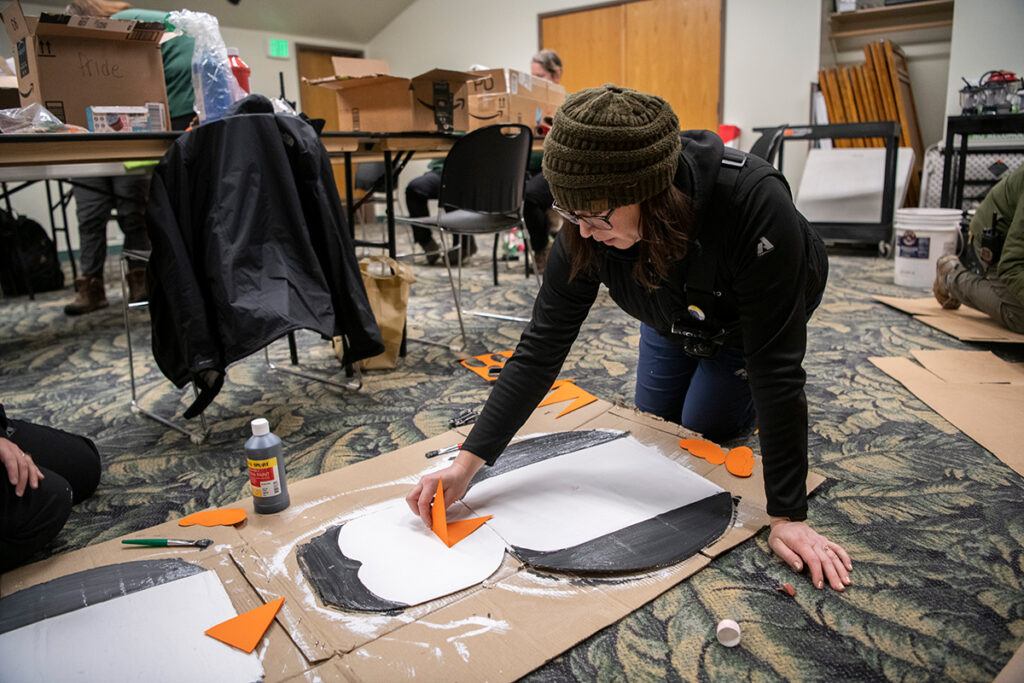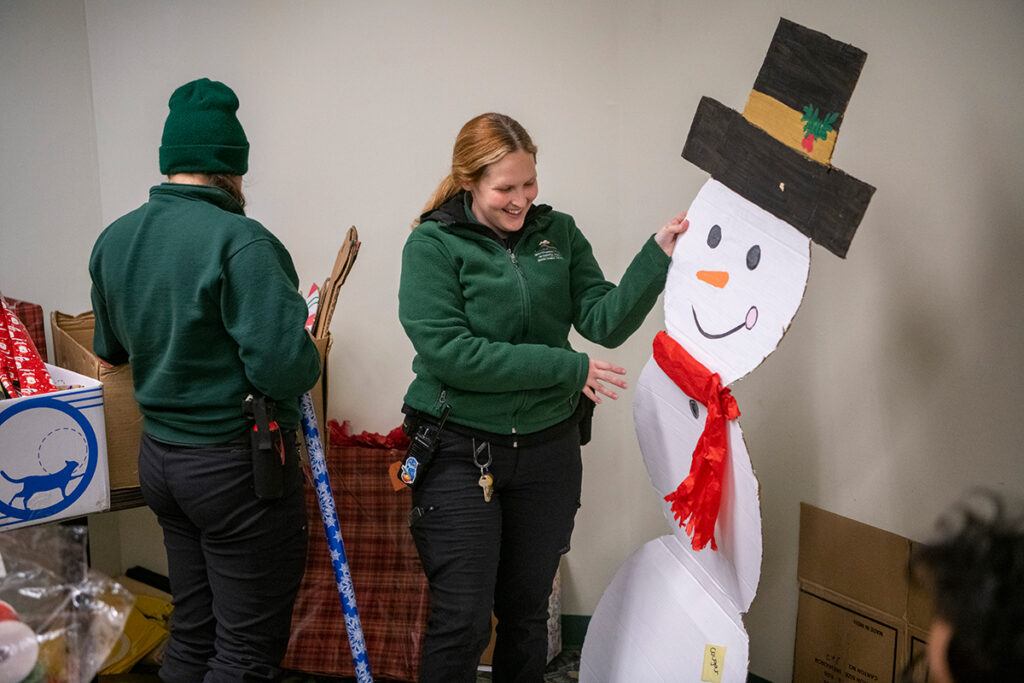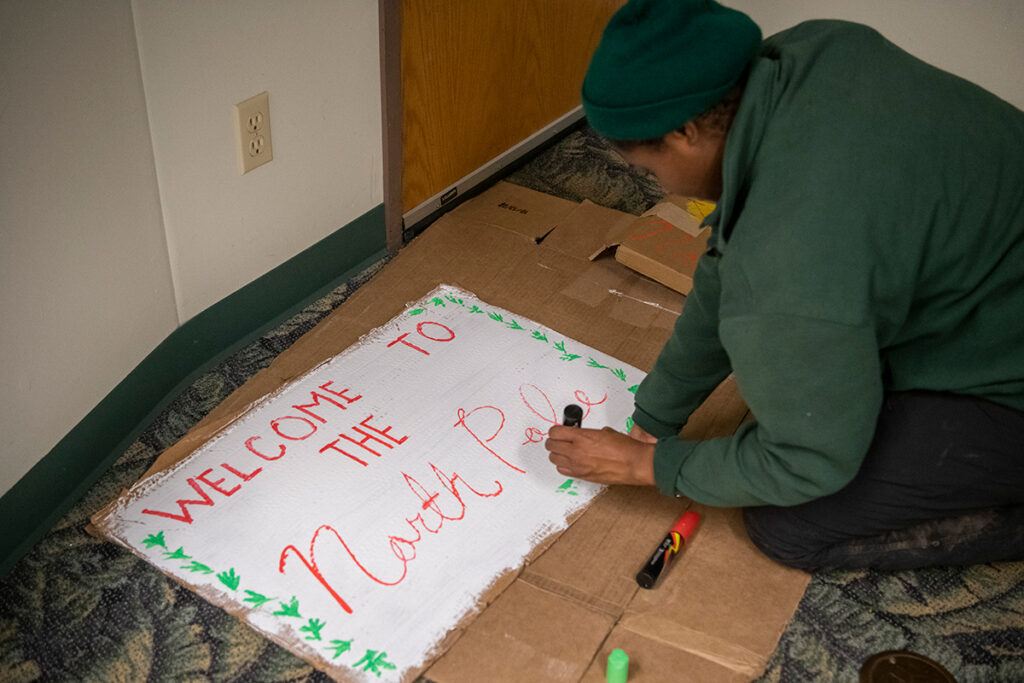Imagine this: you’re driving to Northwest Trek and see the sun peeking through the clouds and illuminating Mt. Rainier. You’re welcomed with a still, frosty winter morning at the wildlife park when you arrive. You are greeted with the sounds of eagles screeching and gray wolves howling. Even better, you’re walking into a Winter Wildland Wonderland created by the Northwest Trek staff. It’s the start of a perfect day filled with the magic of nature.
On a recent December afternoon, staff members spent time doing what might look like arts and crafts to an outsider. But to the keepers and animals, those arts and crafts are an essential part of the everyday life of the animals; it’s enrichment.

“Enrichment items are things like food, smells, or toys that enhance the health and well-being of the animals in our care,” said keeper Haley. “Using these items in combination with knowledge of species’ natural history and behaviors, animal keepers can provide unique experiences that enhance the animal’s overall welfare.”
During Northwest Trek’s annual Winter Wildland, running Dec. 26-Jan. 1, the animals will receive a wide variety of enrichment: cardboard gingerbread houses, paper chains, and even Christmas trees. Stray mountain goat fur or dropped elk antlers found in the Free-Roaming Area can be used as enticing tree ornaments. All the enrichments are thoughtfully crafted by staff, are holiday-themed, and filled with meatballs, veggies, chopped fruit, or other yummy items to attract skunks, lynxes, beavers, and others to explore and investigate.

The animals love it. But for the humans involved, the piles of enrichment stacked up in the office represent lots of creative work to design something stimulating an animal while keeping it safe and healthy. Staff use non-toxic paint, and avoid using glue or duct tape.
Crafty ingenuity and time are part of making enrichments for animals – especially those with super-sharp teeth, long claws, and prodigious strength.
But the other big part is science. The enrichment experience should encourage species-specific behaviors and abilities and allow animals to exercise choice and control within their environments.
The keepers start with what they know about a species and ask: ‘What behavior do we want to encourage?’ For a bear, that might be digging or swimming. For a lynx or cougar, it might be stalking or climbing trees. For a skunk, it might be foraging.
Then they look at how to recreate that behavior using materials safe for the animal.
“For example, wolves are social animals, so we want to encourage pack behavior,” said zoological curator Marc Heinzman. “So, we would give them a bigger piece of meat all at once to help them through pack dynamics and learn how to eat as a group. We might hide food in a log for a bear, so it has to dig.”
But enrichments aren’t all about food. Any item- even just a cardboard box- can be exciting for animals if it smells of something or someone new to them.

Making animal enrichments is enriching for humans too.
“We love doing this,” said Haley. “Anything that makes an animal’s life better.”